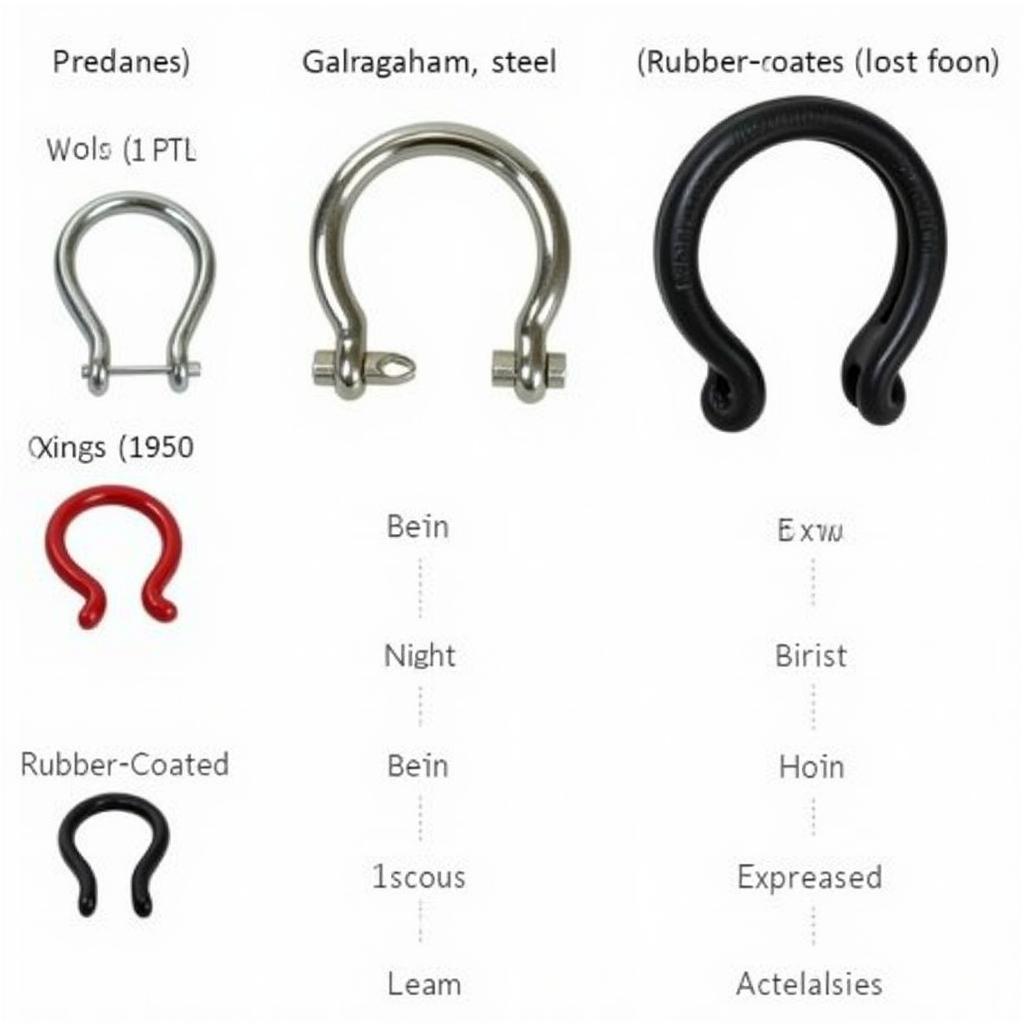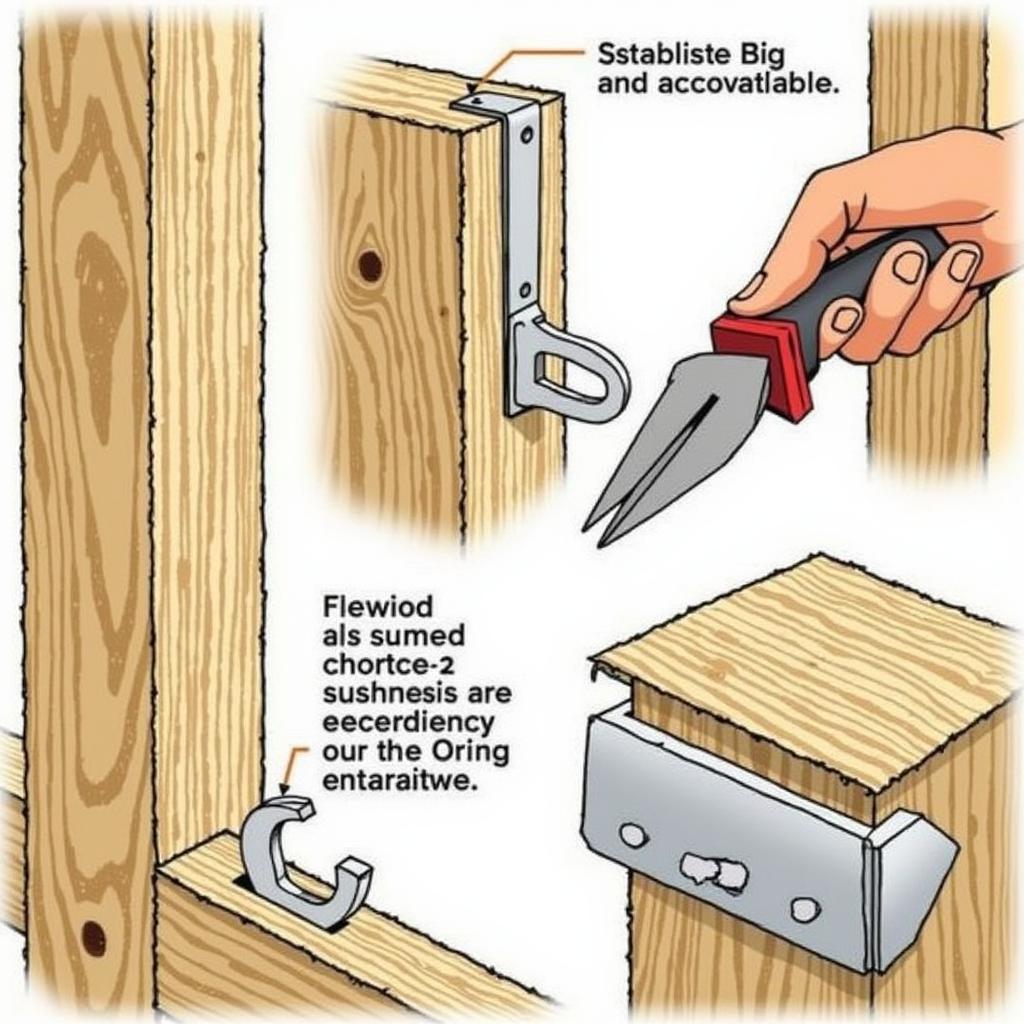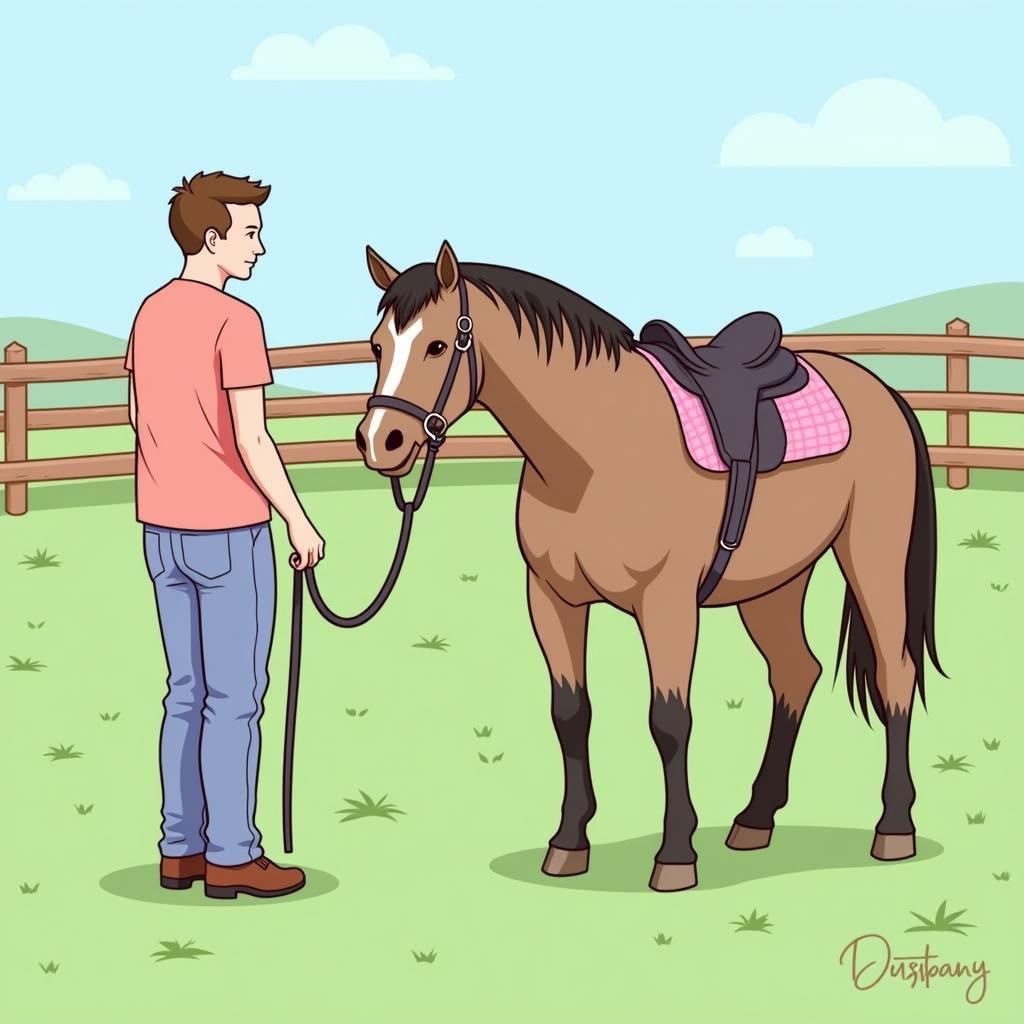Tie Ring Horse safety is paramount for both horse and handler. Whether you’re a seasoned equestrian or a beginner, understanding the nuances of proper tying techniques is crucial. This article provides a comprehensive guide to selecting, installing, and using tie rings for horses, ensuring a secure and comfortable experience for your equine companion. horse tie ring
Choosing the Right Tie Ring
Selecting the right tie ring is the first step towards safe and effective horse tying. Consider the material, size, and location when making your choice. Sturdy materials like galvanized steel or stainless steel are preferred for their durability and resistance to rust. The size of the ring should be appropriate for your horse – too small and it can restrict movement, too large and it can pose a safety hazard.
 Comparing Different Types of Horse Tie Rings
Comparing Different Types of Horse Tie Rings
Tie Ring Placement and Installation
Proper placement and installation of your horse tie ring is just as important as selecting the right type. Ideally, tie rings should be positioned at chest height or slightly higher, and should be securely attached to a sturdy structure. Avoid attaching tie rings to flimsy or unstable objects.
 Installing Horse Tie Rings Safely and Securely
Installing Horse Tie Rings Safely and Securely
Safe Tying Techniques
Once you have a suitable tie ring, mastering safe tying techniques is essential. Always use a quick-release knot that can be easily undone in an emergency. The horse safety tie is a crucial aspect to consider. Avoid tying your horse too short or too long – a good rule of thumb is to allow about 18-24 inches of lead rope between the horse’s head and the tie ring. Regularly check the knot and the tie ring to ensure they remain secure.
“A properly tied horse is a safe horse,” says renowned equine expert, Dr. Amelia Hartman. “Taking the time to learn and practice safe tying techniques is an investment in the well-being of your horse.”
Dealing with a Tied Horse
Approaching a tied horse requires caution and awareness. Always speak to the horse before approaching to avoid startling it. Approach from the side, rather than directly from the front or behind. When untying, ensure the horse is calm and facing you.
 Approaching a Tied Horse Safely and Calmly
Approaching a Tied Horse Safely and Calmly
Maintaining Your Tie Rings
Regular maintenance of your tie rings will ensure their longevity and effectiveness. Check for signs of wear and tear, such as rust or cracks. Replace damaged tie rings immediately to prevent accidents. dime novel legends horse A properly maintained tie ring is a crucial component of horse safety.
Conclusion
Tie ring horse safety encompasses more than just the ring itself; it involves careful consideration of every aspect, from selection and installation to tying techniques and ongoing maintenance. By following these guidelines, you can ensure a safe and positive experience for both you and your horse. Remember that a secure and comfortable tie ring is an essential investment for any horse owner.
FAQ
- What is the best material for a horse tie ring?
- How high should a tie ring be placed?
- What type of knot should be used to tie a horse?
- How much lead rope should be allowed between the horse and the tie ring?
- How should I approach a tied horse?
Common Tie Ring Scenarios and Questions
Scenario: My horse keeps pulling back when tied. What can I do?
Solution: This could be due to several reasons, including improper tying techniques, an uncomfortable tie ring, or anxiety. Try using a quick-release knot, ensuring the tie ring is properly positioned and secure, and desensitizing your horse to being tied. horse spring rider
Question: Can I use a regular rope instead of a lead rope for tying?
Answer: It is not recommended to use a regular rope for tying a horse, as it may not be strong enough and could pose a safety risk. Always use a purpose-made lead rope designed for horse tying. hawaii horses
Further Reading and Resources:
- Explore more articles on horse safety on our website.
- Check out our guide on choosing the right horse tack.
For any further assistance, please contact us at Phone Number: 0772127271, Email: [email protected] or visit our address: QGM2+WX2, Vị Trung, Vị Thuỷ, Hậu Giang, Việt Nam. We have a 24/7 customer service team.